Hey. Today we will continue to explore the insides of mobile devices, in particular smartphones. In today's article, we will focus on the features of the layout of elements inside the smartphone, as well as the organization of the internal space from various manufacturers. This will not be exhaustive information, but my subjective opinion, with which you are free to disagree.
Just starting to repair mobile phones, gaining experience, I faced the fact that different manufacturers use the internal space in different ways and distribute boards, cables, fasteners inside the devices in different ways. At the moment, I have identified for myself five main types of the internal layout of devices.
Chinese, or 'everything is on snot'.
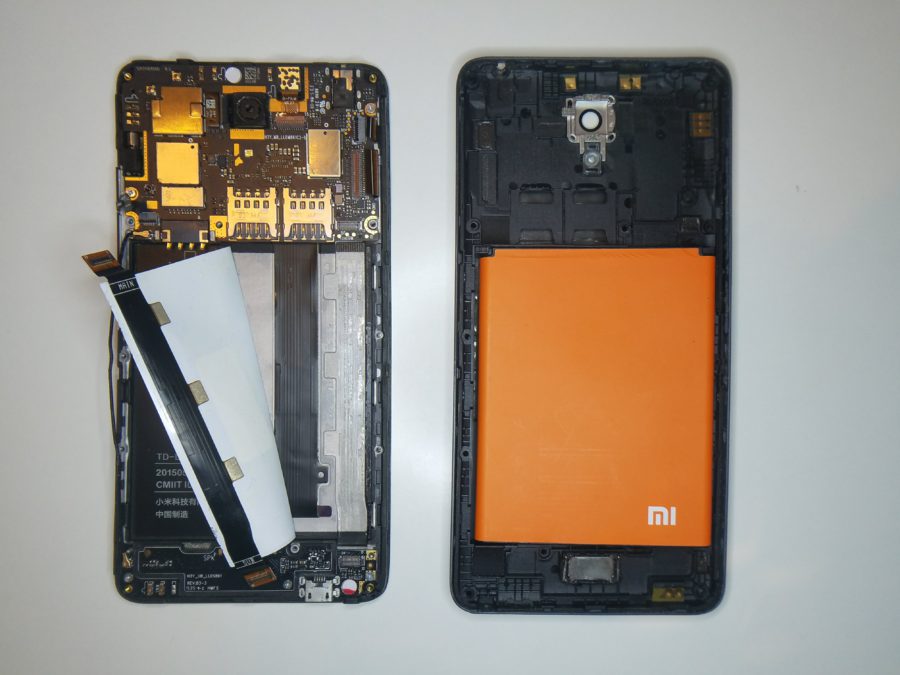
A layout option used in inexpensive Chinese devices, which is characterized by the massive use of wires, loops, and also an island arrangement of elements. The advantage of this arrangement is the ease of replacing individual components without the need for soldering. The downside is the low rigidity of the structure due to savings on materials and a disregard for calculating rigidity. With this arrangement, the parts of the phone that are not intended for this become the supporting elements of the case. For example, the supporting element to which the electronics is attached can be a display. Recently, such an arrangement is found only on very budget devices, since the self-respecting Chinese began to pay attention to the calculation of the structure. It's good that such devices are safely dying out.
'Old school'.

Most typical for devices Motorola. The peculiarity of such a layout is that engineers Motorola have been guided by the principle of 'textolite is not a pity' when developing devices for many years. This is expressed in the fact that the motherboard (main) of the smartphone occupies almost the entire internal area of the device. Because of this, the batteries in Moto smartphones are flat and thin with a comparable capacity, larger in area than batteries from other manufacturers. For example, the battery from Moto X 2014 compared to the battery from Samsung Galaxy S3 (comparable capacity).


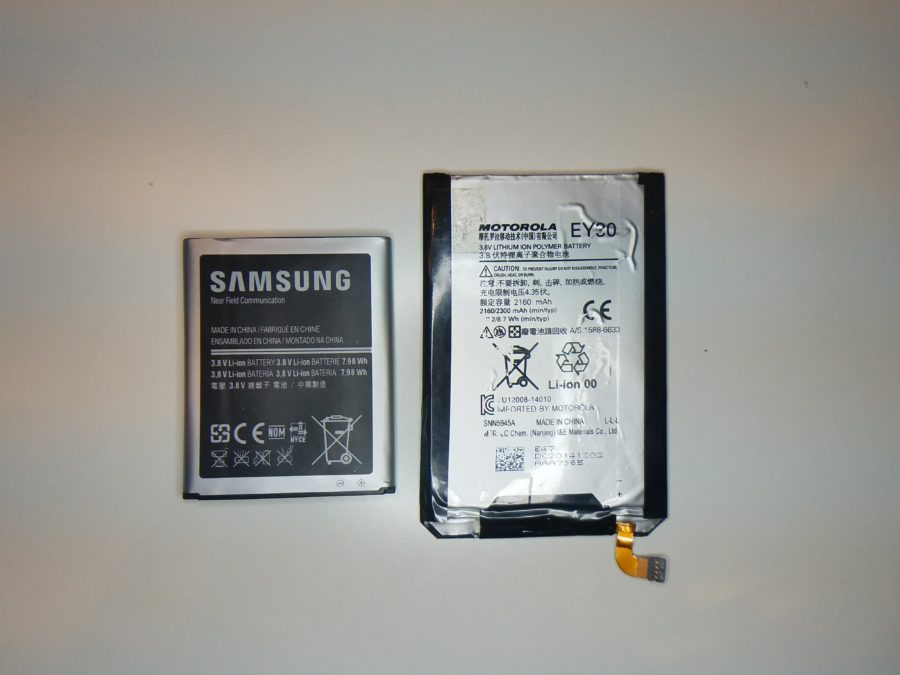
A curious feature is that in this case the board itself is part of the supporting frame, providing the rigidity of the case. On the one hand, the decision is controversial, since the board is a very delicate thing and does not like bends very much, on the other hand, the years of using this design have proved that it has the right to life. And, apparently, Moto doesn't like to make holes in the board and contact cables. How else to explain the fact that even the speakers are not connected by a loop, but rest on the contacts directly on the board.
No. It is impossible to do without cables at all, and where appropriate, this connection option is used, however, Moto has not wanted to divide the board into parts for many years.
In general, Moto devices have always come across as reliable and well-built. Many screws (not as many, of course, as in iPhone), many fasteners.
With this design, there is one implicit disadvantage – when the case is deformed from impact and, for example, a display module is replaced, it is difficult to restore the case geometry.
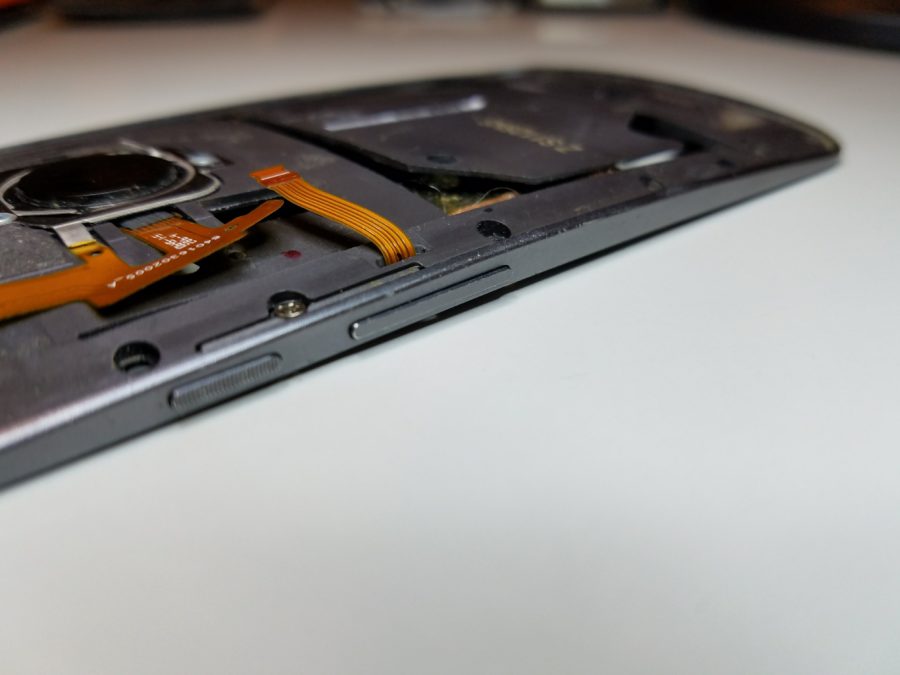
Ultimately, this can cause internal stresses after assembly, which can lead to damage even with light loads on the assembled device.
Modular design like 'I love loops!'
It is typical for many manufacturers and differs in that different modules of the device are connected by flexible cables that can penetrate the interior of the device in the most unexpected places. Such constructions are very fond, for example, in Sony, HTC.

And if HTC is limited to a loopomania, then Sony likes to make puzzles to the masters in the form of a difficult process of removing the motherboard from the case.

The advantage of this design, like the 'everything on snot', may be the relative ease of replacing individual modules. However, the problems are not added by the most logical arrangement of these very loops. Rather, the location is, in fact, logical, but calling it convenient for disassembly is unlikely to turn one's tongue. For example, in Sony devices, loops can be located both above the battery and simultaneously under the battery. At the same time, some loops are very fragile and have a complex geometry.
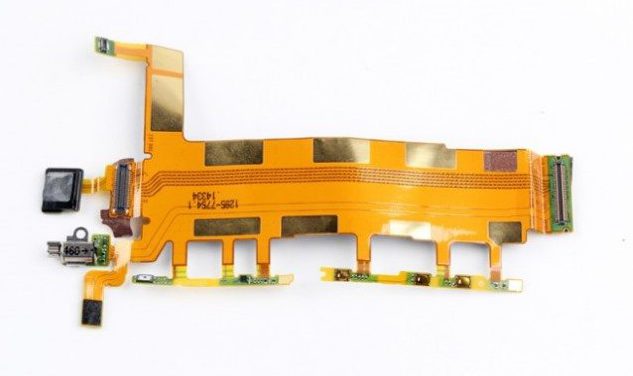
She does not lag behind and LG with her love to let the trains through the entire body.

And they are also ornately hidden in the elements of the case, and then disassembling the device turns into a quest.
Modular design like 'modules, screws and glue'.

The most typical representative of this type is the Korean manufacturer Samsung. Koreans have remained true to themselves for several generations of devices, dividing the internal elements into two parts – the main board and the bottom board. In addition, with a similar design, the main type of module connection is connectors and a minimum of wires. Access to the board is usually easy and very fast. Everything would be great if not for one nuance – glue! Koreans are addicted to glue and fill the display module with it along with the navigation buttons and the home button, which makes replacing these elements extremely laborious.
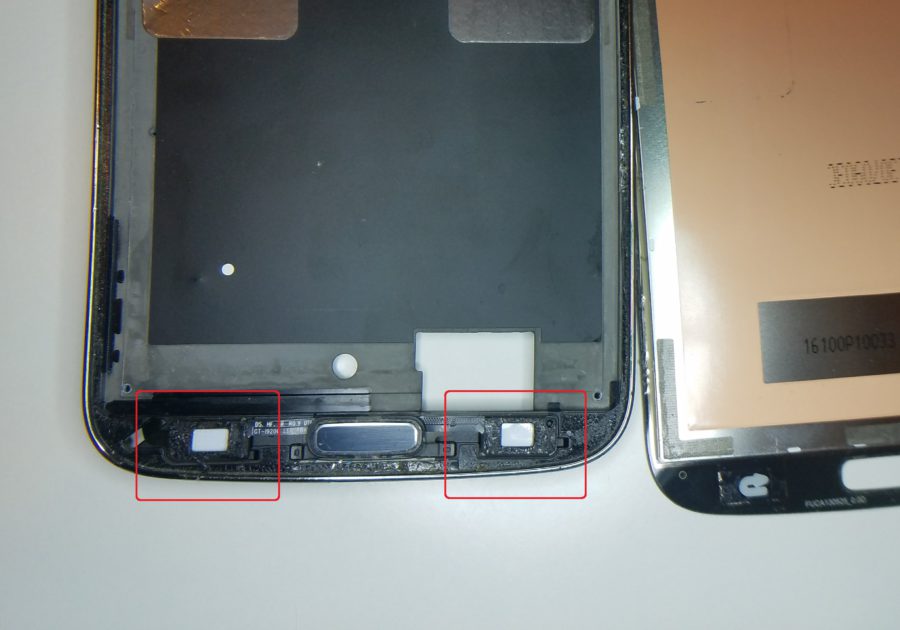
Button loops cannot be replaced without removing the display module.
Apparently, the Koreans believe that the display module in the latest generations of devices can and should be replaced only as an assembly with a frame, bottom board and a bunch of other elements. Not the most obvious way out, but in the conditions of a consumer society and in the age of disposable things, it is the most justified from the point of view of profit and very unpleasant from the point of view of the consumer's budget.
'Safe'.
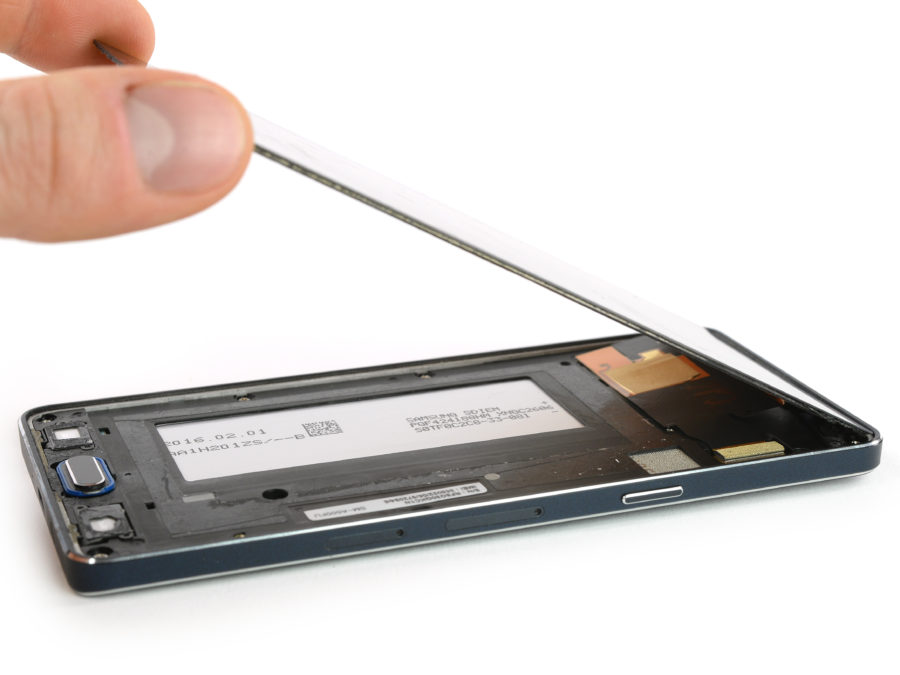
Source iFixit.com
Inside, this type of device layout can be different, both with modules and with loops. They are united by the design of the case, which is a tray in which all the elements are laid, closed from above by a display module, often glued to the internal elements. In order to open such a device, you will have to peel off the display module, since there is no other way to get to the insides.

Source iFixit.com

In the case of some manufacturers, this is not a problem; in the case of others, it promises you an exciting pastime, which will be held under the slogan 'will the display burst or not'. With this design, if the manufacturer is not stingy with the glue (hello Samsung), even replacing the battery becomes a non-trivial task that can lead to serious expenses. The company Apple became a popularizer of this design, releasing iPhone 5 with a body in the form of an aluminum bath, covered with a display.
Conclusion
A large number of people of various professions are involved in the development of any electronic device, including those who think over the internal layout, as well as the principles of placing the elements of the finished product. Often it depends on these people how maintainable the final result will be. There are even those who made an assessment of the maintainability of devices as the basis of their activities, earning authority and money on this. Often, reading the conclusions of such resources, I internally disagree with many points, and I want to give my own score, but this remains an internal feeling and disagreement.
In fact, there are many more types of layout and options for placing elements. Here I have given only the main ones, the most frequently encountered in the process of repairing devices from various manufacturers. In addition, the above is just my subjective experience. Every phone repairman has his own list of favorite and least favorite manufacturers in terms of ease of disassembly / assembly and repair. Have you had any experience in electronics repair, and what are your impressions of it?
P.S. I am deliberately not describing devices Apple as this blog is about Android.
